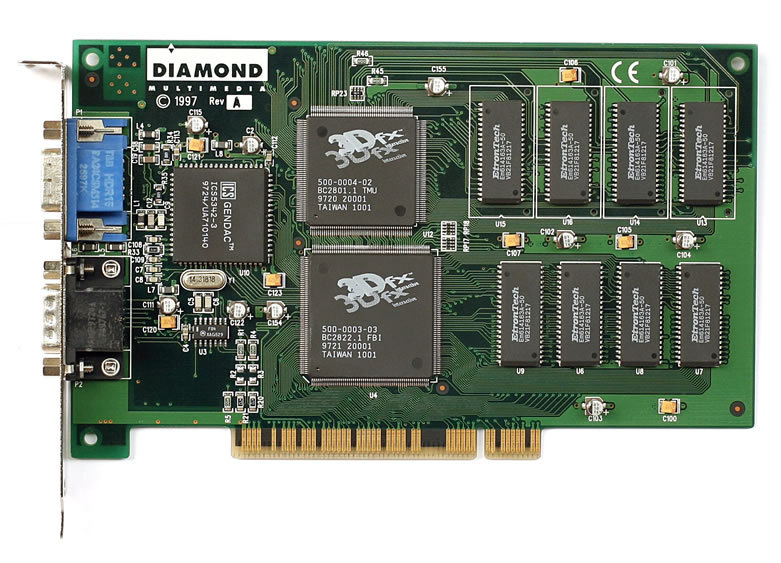Launched on November 1996, 3Dfx"s Voodoo graphics consisted of a 3D-only card that required a VGA cable pass-through from a separate 2D card to the Voodoo, which then connected to the display.
The cards were sold by a large number of companies. Orchid Technologies was first to market with the $299 Orchid Righteous 3D, a board noted for having mechanical relays that “clicked” when the chipset was in use. Later revisions utilized solid-state relays in line with the rest of the vendors. The card was followed by Diamond Multimedia’s Monster 3D, Colormaster’s Voodoo Mania, the Canopus Pure3D, Quantum3D, Miro Hiscore, Skywell (Magic3D), and the 2theMAX Fantasy FX Power 3D.

Voodoo Graphics revolutionized personal computer graphics nearly overnight and rendered many other designs obsolete, including a vast swathe of 2D-only graphics producers. The 3D landscape in 1996 favoured S3 with around 50% of the market. That was to change soon, however. It was estimated that 3Dfx accounted for 80-85% of the 3D accelerator market during the heyday of Voodoo’s reign.
Read: History of the Modern Graphics Processor, Part 2
These articles are brought to you in partnership with TechSpot.